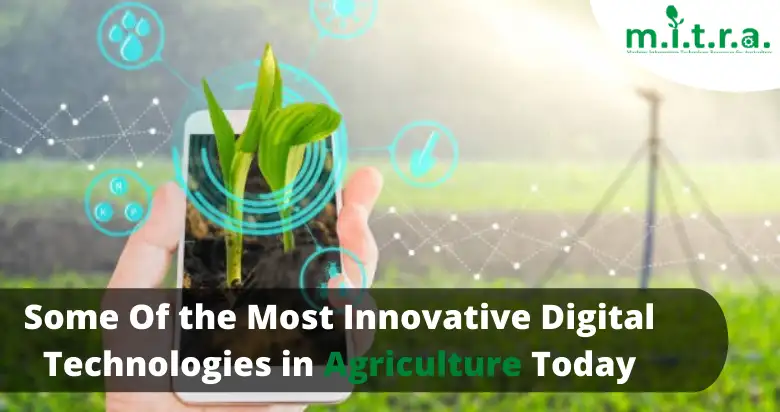It became increasingly important for the agriculture industry to focus on efficiency, productivity, and profitability as its worldwide goal became to produce more with less. It’s here that digital technology has had a significant impact and brought some promise for the future. Even though the agriculture business has been slow to adopt digital technology, it is catching up and getting the benefits as promised. A significant finding from our study will be discussed in this article the essential technologies that are revolutionizing the agricultural sector now and appear promising in the immediate future. An agriculture sprayer is a complete spray system that uses pressure to force spray fluid from a tank to the nozzles of the sprayer, which subsequently spray the crop or soil.
Top 7 Agriculture Technology Innovations That Are Transforming the Industry
Businesses and organizations involved in agriculture throughout the world want to see a stable, resilient, and highly efficient system. To make this happen, digital technologies must be at the forefront. Even while there are many unique and independent digital projects taking place throughout the world, not all of them can be discounted; some technologies have had greater acceptance and have had more of an influence than others. Listed here are the top seven choices:
- Robotics & Automation
- Big Data, AI & ML
- Drones & Satellites
- IoT & Sensors
- Blockchain
- Cloud Computing
- Mobile apps
Let’s look at the scope, purpose, and impact of each one of them
Manpower scarcity was one of the significant impacts of supply chain disruption and movement limitations last year. Farm activities suffered due to workforce shortages. Early investors of automation technology were able to overcome this hurdle easily. Robotics and automation eliminate manual involvement and increase productivity. High-precision robots can also be utilized for precision sowing and crop picking, especially if important crop quality is. Robotics and automation enhance processes in terms of time and precision. The Air Assisted Sprayer has a rear air conveyor that guarantees perfect air balance, resulting in maximum air output and little power use.
2. Big Data, AI, And Machine Learning in Agriculture
Sensors, engagement tools, and other technology are deployed across the agriculture industry, capturing data. The value of this Data depends on how well it is used to produce valuable insights. That’s where AI and machine learning come in. Modern AI and ML algorithms can operate with both structured and unstructured data. These results show which approach or parameter combination works best. It also helps predict issues, improve resource consumption, and simplify decision-making. Everyone in the supply chain, from farmers to merchants, can make data-driven decisions. Specific instruments, such as the agriculture blower, a key piece of equipment for crop protection, are necessary to correctly administer these treatments.
3. Drones in Agriculture for Efficient Automation
Drones are one area where agriculture is expected to lead other industries in technological adoption. Drone-enabled eCommerce delivery is yet to come, but drones are currently being used in agriculture for several purposes. Drones in agriculture have made farm management more accessible and effective by quickly scanning soil health, monitoring huge farms, applying fertilizers, spraying, and gathering field data for the study.
4. IoT And Sensors in Agriculture to Optimize Processes and Collect Data
The Internet of Things and sensors have several uses in agriculture. IoT has empowered agriculture supply chain stakeholders by enhancing cost efficiency, decreasing losses, and enabling everyone to make better decisions. The great diversity of data creation is ascribed to IoT and sensor capabilities to gather data utilized in analytics to make strategic decisions.
5. Cloud Computing in Agriculture Enables Remote Data Access
Cloud computing has enabled other technologies to reach their full potential. Cloud computing eliminates the need for costly hardware infrastructure, maintenance, and technical expertise. In reality, when discussing the necessity of real-time information accessible from anywhere globally, Cloud computing is a must. The Cloud’s computer power speeds up data processing. All processed data may be made available to farmers, suppliers, retailers, and others in the agriculture supply chain.
6. Blockchain In Agriculture to Improve Supply Chain Transparency
Blockchain’s unrivaled security and transparency are assisting in the agriculture supply chain. These include identifying Agro inputs and products across the supply chain, tracing food origins, and safeguarding enormous volumes of data. Agri supply chains are typically plagued by issues including counterfeit products, unethical sourcing, altered data, and more. Like other industries, blockchain helps overcome this issue in agriculture supply chains.
7. Mobile Apps in Agriculture To Improve Value Chain Coordination
Communication and coordination are significant issues in the agricultural supply chain. Mobile apps can bring real-time data, updates, and communication to all supply chain stakeholders. Mobile applications can help supply chain actors communicate more efficiently, whether for inventory management, demand-supply forecasting, or ordering inputs from suppliers. Not only that but smartphone applications are now being used as a farmer’s information base. Many companies, governments, and NGOs utilize mobile applications to educate farmers about agro-inputs and best practices.
Conclusion
The current agricultural revolution is like the Industrial Revolution 4.0. This ecosystem is resilient and meets the demands of individual stakeholders, progressively growing the impact to achieve the overall agriculture goals. Spraying orchard crops such as grapes, pomegranates, oranges, and mango is done with a tractor mounted sprayer.

